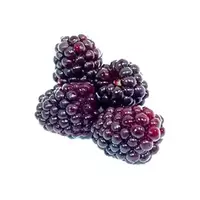Pestilence

Looking at the picture, it's a mistake to think it's blackberry berries, isn't it? However, in fact, although these fruits have many in common, in many ways they differ. The fruit of mora, whose name sounds like Rubus glaucus in Latin, belongs to the family of pink subfamilies rosana. Further, according to the characteristic, there is a class of dicotyledonous department of angiosperm genus rubus. By this definition, it can be judged that the mora fruit exotic to our places is indeed the closest relative of raspberries and blackberries. All these fruit shrubs are quite large.
The birthplace of the mora fruit (and this is actually a fruit, not a berry) is considered to be the foothills of the Andes. In wild form, this plant, quite common in those parts, can be found from Mexico to Peru. Cultivated as a mora garden crop in South and Central America, the plantations of this interesting plant in Colombia and Ecuador are particularly extensive.
The main difference between mora fruit and raspberries and blackberries is the rather sour taste of mature fruits, while domestic berries are characterized by a special sweetness with barely noticeable savory acid. In addition, the shape of the sea can be completely different: from miniature and perfectly round to impressive sizes of oblong fruits. The color of the mora fruit also changes: from rich raspberry to dark purple, almost black. Connoisseurs argue that the taste of a mature fruit is incomparable, and the aroma is unforgettable.
Due to the fact that the mora fruit contains a lot of useful substances, in particular a huge amount of vitamins and minerals, this exotic fruit carries a lot of healing properties for human health. First of all, mora is an excellent natural laxative. Swedish doctors recommend that mora-based soup be included in the children's diet for problems with bowel disorder in the baby.
In addition, due to the content of tannin in this miracle fruit, its consumption improves the microcirculation of blood in people who suffer from atherosclerosis. This fetus is considered ideal for increasing pressure, as well as treating diseases of the respiratory tract of an inflammatory nature.
Due to the considerable amount of iron, the benefits of mora fruit are especially relevant in the presence of anemia. And eating these fruits helps to improve appetite. Mora fruit can lower blood sugar, so it is recommended to be used as a food for people with diabetes.
Mora 34 kKal
Energy value of the mora (Ratio of proteins, fats, carbohydrates - ju):
Proteins: 1.5 g (~ 6 kCal)
Fats: 0.5 g (~ 5 kCal)
Carbohydrates: 5.9 g (~ 24 kCal)
Energy ratio (b | y): 18% | 13% | 69%
 Español
Español Français
Français Português
Português Русский
Русский 简体中文
简体中文 繁體中文
繁體中文 日本語
日本語 한국어
한국어 العربية
العربية Türkçe
Türkçe Қазақ
Қазақ Deutsch
Deutsch Italiano
Italiano Українська
Українська
